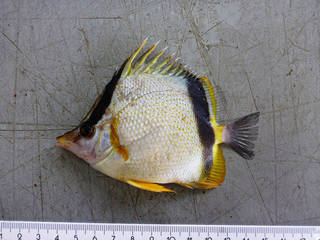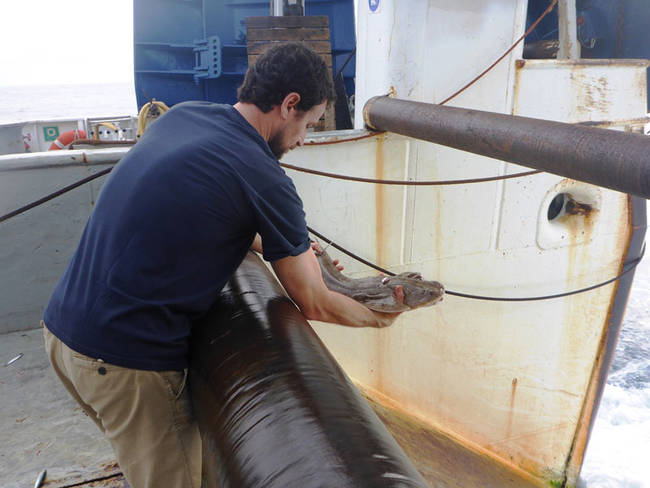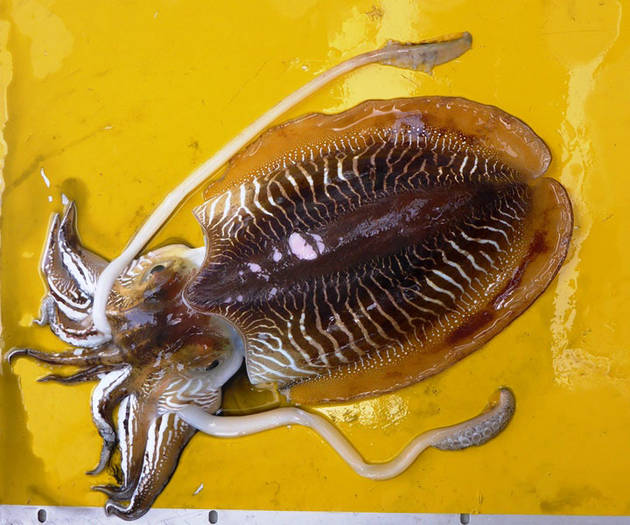Signing off from the Nansen for now, but the voyage continues!
Peter and I are now back ashore after spending twenty exciting and hard-working days aboard the Nansen.
Our last couple of days were busy with finalizing our work on the ship, and enjoying our last few hours in the warm breeze and even managing to relax for a bit on deck, something that hasn’t been possible over the past days with our hectic schedules. We are grateful we got to spend these few days on the Nansen with a great group of scientists, and we hope our work brings us together again in the future.
Luckily, our last few days kept us busy with the ever-interesting work of species identification, which got us thinking about the perceptions surrounding species identification and what we actually know.
A common misconception we encounter quite a bit from the general public is that most species have already been described, and any new species are likely to be encountered only from deep-water fishing expeditions into unexplored areas. However, the truth is that while we know a lot about the oceans, we realize we are only scratching the surface of all there is still to discover, when we consider the vastness of the space and the incredible species diversity found within. Each time we conduct an expedition a new species is found, thereby adding to our growing knowledge.
As an example, panrays (family Zanobatidae) are coastal batoids found in shallow waters up to 100 m depth on the continental shelf. These species of zanobatids include a single genus with only two species in this area. One of these species is already described, Zanobatus schoenleinii (Müller and Henle, 1841), and the second Zanobatus sp. n. is presently under description (Séret in preparation). We had caught one female specimen alive which we identified as one of the new species, and we kept her in a tank for some observation before releasing her back into the sea.
The excitement of encountering new species aside, we also caught a few well-known species that still allowed for some interesting observations:
Butterflyfishes: elegant, agile swimmers
Chaetodon robustus and Prognathodes marcellae, are two species of butterflyfishes most commonly occurring over coastal rocky areas and geographically confined to the Central Eastern Atlantic. They have short and laterally compressed bodies that are perfectly adapted for swimming around highly structured habitats (i.e. coral formations, rocky reefs, etc.). Butterflyfishes possess small jaws, which are used like forceps, to prey upon small invertebrate prey. When pursued, they dart in and out of ledges and crevices with great ease, leaving faster, but less agile, predators behind.
Doting dads
The cardinalfish, Apogon imberbis, is a small fish inhabiting coral and rocky reefs from shore to about 200 m depth.
It is nocturnal, feeding on small invertebrates and zooplankton and is known to be an oral brooder, with the male incubating a sack of eggs in its mouth.
Cardinalfishes are not commercially exploited, but some species occasionally appear in the marine aquarium trade.
Efforts to reduce mortality of sharks and rays onboard
Sharks and rays are particularly vulnerable to overfishing because of their biological traits (slow growth rates, late maturation, long gestation, low fecundity, longevity).
As such, we take particular care to reduce their mortality when accidentally caught, as do most commercial fishing operations. During this survey, special attention was paid and sharks and rays that were immediately identified in a catch were counted, weighed, and released alive whenever possible.
The giant African cuttlefish
Sepia hierredda is among the largest known Sepia species with a mantle that reaches up to 50 cm in length.
It is found from shallow coastal waters to the slopes of the continental shelf, and it is of commercial importance throughout its entire geographical range in West Africa (Mauritania to Angola).
This species has been long considered as a subspecies of Sepia officinalis (that occurs off the Northwest African coast), but recent morphological and molecular analysis has shown that S. officinalis and S. hierredda are clearly different species. Other cephalopods, such as Sepia bertheloti, Seppiella ornata, Alloteuthis africana, Illex coindetii, Todaropsis eblanae, and some Octopus species were also found in the catches.
Stay tuned for the next cruise
While Peter and I disembark the Nansen in Tema, Ghana, and head back to Rome, the Nansen continues on the next and final trip for this boat. In 2017 the new, larger, Nansen will pick up the work and our faithful boat of the last 30 years will head back to Norway to finish off its days as a university research vessel. That being said, both Peter and I are glad we got to spend time on the old vessel that has many stories to tell from its time sailing the Indian and Atlantic oceans.
After three weeks, we hope you enjoyed reading about our experiences as much as we enjoyed sharing them with you.
A big thanks to our readers for tuning in from us and the other scientist aboard this Ghana survey voyage.
“Arrivederci”
Fabio & Peter








